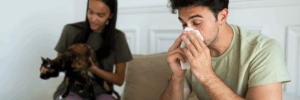Chronic venous insufficiency (CVI) is a common condition that affects millions, yet many people are unaware of their risk. This condition, which impairs blood flow from the legs back to the heart, can lead to discomfort, swelling, and more serious health issues. Understanding the key chronic venous insufficiency risk factors is the first step toward safeguarding your leg health. By being proactive, you can implement effective chronic venous insufficiency prevention strategies and reduce your chances of developing this condition. This checklist will help you assess your personal risk and empower you to take control of your vascular well-being. Get a consultation with the best vascular disease specialists in Brooklyn.
Understanding the Primary Chronic Venous Insufficiency Risk Factors
CVI develops when the small valves in your leg veins weaken or become damaged, allowing blood to pool in your lower legs. While anyone can develop CVI, certain factors significantly increase your likelihood. Go through this checklist to see which ones may apply to you.
- Age
As we get older, the valves in our veins can experience natural wear and tear. This makes age one of the most significant and unavoidable risk factors for CVI. The likelihood of developing venous issues increases substantially after the age of 50.
Did your parents or grandparents have varicose veins or other leg vein issues? If so, your risk is higher. A family history of CVI suggests a genetic predisposition to weaker vein valves, making it a critical factor to consider.
- Sedentary Lifestyle or Prolonged Standing
Your calf muscles play a crucial role in pumping blood up your legs. If you have a job that requires you to sit or stand for many hours at a time, your calf muscles are not contracting enough to effectively assist blood flow. This inactivity increases pressure in the leg veins.
- Office Workers: Long hours at a desk can impede circulation.
- Retail Staff, Teachers, and Healthcare Workers: Occupations that involve prolonged standing are also high-risk.
- Excess Weight or Obesity
Carrying extra body weight puts additional pressure on all parts of your body, including your leg veins. This constant pressure can strain and weaken the venous valves over time, contributing directly to the development of CVI.
- Pregnancy
Pregnancy brings about several changes that increase CVI risk. The volume of blood in the body increases, putting more strain on the veins. Additionally, hormonal changes can cause the vein walls to relax and stretch, while the growing uterus can press on major veins, impeding blood flow from the legs.
- History of Deep Vein Thrombosis (DVT)
A previous blood clot in a deep vein, known as DVT, can damage the valves within that vein. Even after the clot is treated, the valve may not function properly, leading to a condition known as post-thrombotic syndrome, which is a form of CVI.
Proactive Chronic Venous Insufficiency Prevention Strategies
While you can’t change your age or genetics, there are many proactive steps you can take to mitigate other chronic venous insufficiency risk factors. Implementing these chronic venous insufficiency prevention strategies can significantly improve your vascular health.
Maintain an Active Lifestyle
Regular physical activity is one of the most effective ways to prevent CVI.
- Incorporate Daily Movement: Aim for at least 30 minutes of moderate exercise, like brisk walking, most days of the week. Walking activates the calf pump mechanism, which is essential for healthy circulation.
- Break Up Long Periods of Inactivity: If you have a desk job, get up and walk around for a few minutes every hour. If you stand all day, take short breaks to sit and elevate your feet. Simple ankle rotations and calf raises can also help.
Manage a Healthy Weight
Losing even a small amount of excess weight can dramatically reduce the pressure on your leg veins. A balanced diet and regular exercise are key to achieving and maintaining a healthy weight, which is a cornerstone of CVI prevention. If you need guidance, a consultation with a healthcare provider can be beneficial.
Elevate Your Legs
Make it a habit to elevate your legs above the level of your heart for 15-30 minutes, a few times each day. This simple action uses gravity to help drain pooled blood from your lower legs, reducing pressure and swelling.
Consider Compression Stockings
If you have multiple risk factors or a job that requires prolonged sitting or standing, talk to a vascular specialist about using compression stockings. These garments provide external support to your veins, helping them pump blood more efficiently.
When to Consult a Specialist
If you have ticked several boxes on this risk factor checklist or are already experiencing symptoms like leg aching, swelling, or varicose veins, it’s time to seek professional advice. A vascular specialist can assess your specific situation, perform diagnostic tests like a vascular ultrasound, and recommend a personalized plan.
In some cases, early intervention with a qualified provider, such as a vascular surgeon in Brooklyn, can prevent the condition from progressing. Modern treatments are minimally invasive and highly effective, so there is no reason to wait until symptoms become severe. For those in New York, scheduling a consultation with a top vascular surgeon in Brooklyn can provide access to the latest diagnostic tools and treatments.
By understanding your personal chronic venous insufficiency risk factors and taking proactive steps toward prevention, you can protect your legs and maintain your quality of life for years to come. For any vascular problems, call us on + 1-718-367-2555. The Vascular Disease Specialists at Doral Health & Wellness consistently have outstanding patient satisfaction ratings. The professionals at Doral Health & Wellness Vascular Health Department Brooklyn can improve your health and quality of life because of their vast training and experience. New Yorkers can get the greatest medical and surgical vascular care at Doral Health & Wellness Brooklyn. If you need help, register your information and make direct contact with our doctors at https://yuz88hfiyh7.typeform.com/Doralintake or send an email to info@doralhw.org. Visit us at 1797 Pitkin Avenue, Brooklyn, NY 11212.






